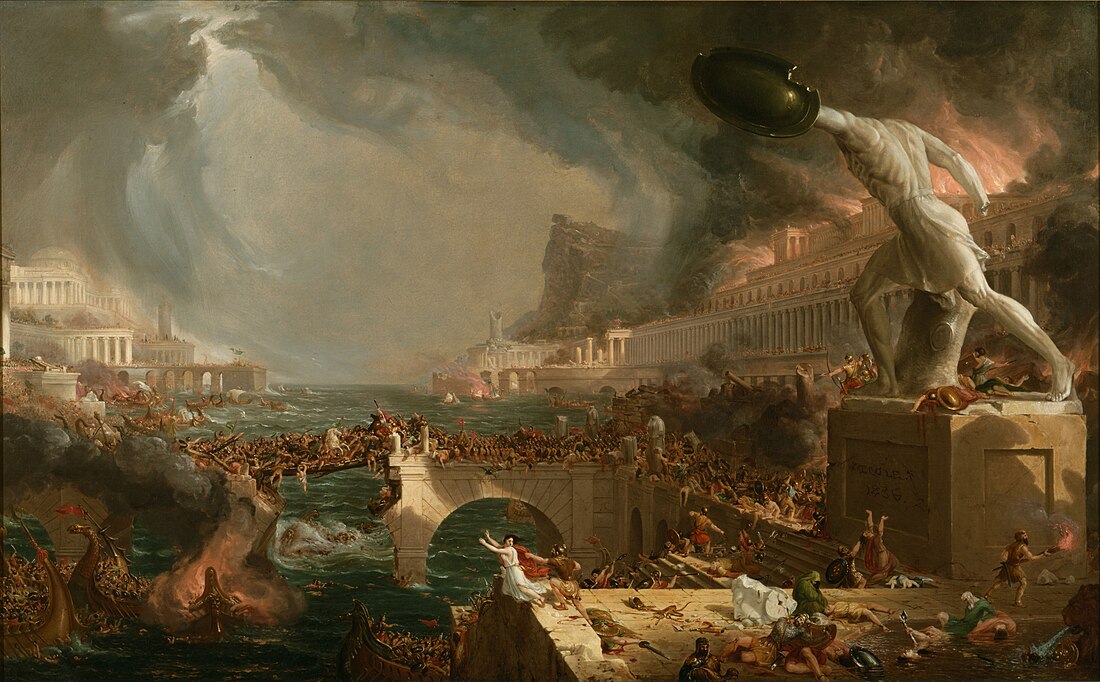
Ancient Tree Rings Illuminate How Climate Extremes Incited Turmoil in Roman Britain
New findings have revealed persuasive evidence that three consecutive years of intense drought from 364 to 366 CE critically undermined Roman Britain’s strength, ultimately paving the way for the disastrous “Barbarian Conspiracy” of 367 CE. This crucial event witnessed an onslaught from multiple northern tribes—specifically the Picts, Scots, and Saxons—who launched a brutal, synchronized assault on the province, resulting in a state of crisis.
Led by a team of scientists from the University of Cambridge and recently published in Climatic Change, the study establishes a groundbreaking connection between environmental stressors and historical disruptions, merging dendrochronology (the analysis of tree rings) with historical documentation to enhance our understanding of how nature influenced one of the most tumultuous periods of the Roman Empire.
Exploring History Through Tree Rings
By examining the annual growth rings of ancient oak trees, researchers constructed a comprehensive timeline of precipitation in southern Britain during the late 4th century. These trees function as natural climate records, with narrower rings signifying years of limited water availability. The analysis indicated that three consecutive growing seasons (from April to July) between 364 and 366 CE underwent marked reductions in rainfall, measuring only 54-72% of the average long-term levels.
According to lead author Charles Norman from Cambridge’s Department of Geography, although ancient literature suggested upheaval, there was previously limited physical evidence elucidating why conditions in Roman Britain deteriorated so rapidly. “We don’t have substantial archaeological evidence concerning the ‘Barbarian Conspiracy.’ While written records provide context, our research elucidates the triggers for this significant event,” Norman clarifies.
Collapse Fueled by Drought
Southern Britain was the agricultural backbone of the Roman province, supplying the grain necessary to sustain both the civilian populace and the stationed Roman troops. Roman farming practices heavily depended on spring-sown crops—a cultivation strategy highly susceptible to early summer droughts. A single poor harvest could severely impact local supplies; three successive failures were devastating.
Co-author Professor Ulf Büntgen remarks, “The impact of three years of drought would have severely diminished the productivity of the most critical agricultural region in Roman Britain. As depicted by Roman authors, this led to severe food shortages with all the social destabilization this entails.”
Historical records, including those of chronicler Ammianus Marcellinus, describe dire famine conditions by 367 CE. Troop supplies dwindled, morale and organization within the Roman military deteriorated, and local populations likely faced starvation—all contributing to an environment conducive to invasion and rebellion.
The Barbarian Conspiracy: A Calculated Strike
Exploiting this systemic frailty, a coalition of external tribes initiated a multi-pronged invasion. Picts from the north, Scots from Hibernia (present-day Ireland), and Saxons from across the North Sea launched a rare, synchronized assault on the island. Amid the turmoil, elements of the Roman garrison, weakened and demoralized from the food crisis, reportedly defected or failed to resist the attacks.
The outcome was catastrophic: Roman commanders were either killed or captured, and vital fortifications—like sections of Hadrian’s Wall—were breached. Although Roman authorities ultimately regained control, this incident signified a critical turning point in the decline of Roman authority in Britain. Less than fifty years later, around 410 CE, the last Roman officials exited entirely.
Climate and Conflict Throughout the Empire
The study extends beyond Britain, examining the wider implications of climate on Roman imperial conflicts. Researchers analyzed climate conditions preceding 106 battles across the Western Roman Empire from 350 to 476 CE and discovered a statistically significant link between drought conditions and the eruption of conflict.
“This reinforces the notion that climate extremes can destabilize even the mightiest societies,” noted co-author Tatiana Bebchuk. “The connection between climate and conflict is becoming increasingly apparent in our current era, so these findings are vital not just for historians. Extreme climatic conditions result in hunger, triggering societal challenges that can lead to outright conflict.”
Insights for the Present and Future
Though the Roman Empire appeared unassailable at its peak, this study highlights how susceptible even the most sophisticated civilizations can be to environmental disruptions. In the case of Roman Britain, cascading failures in agricultural yield, military logistics, and internal stability opened the door for traditionally contained enemies to strike.
With climate change increasingly recognized as a critical global issue, contemporary societies should pay attention to these historical insights. Environmental pressures can suddenly destabilize delicate political or economic systems. Grasping these dynamics, whether from ancient or contemporary contexts, is essential for developing resilient societies.
As global climate challenges escalate—from prolonged droughts to more frequent extreme weather occurrences—this research serves as a poignant reminder that environmental factors can significantly influence historical change.
Support Independent Science Journalism
If this reporting has provided valuable insights or inspired you, please consider contributing to help us continue our mission.